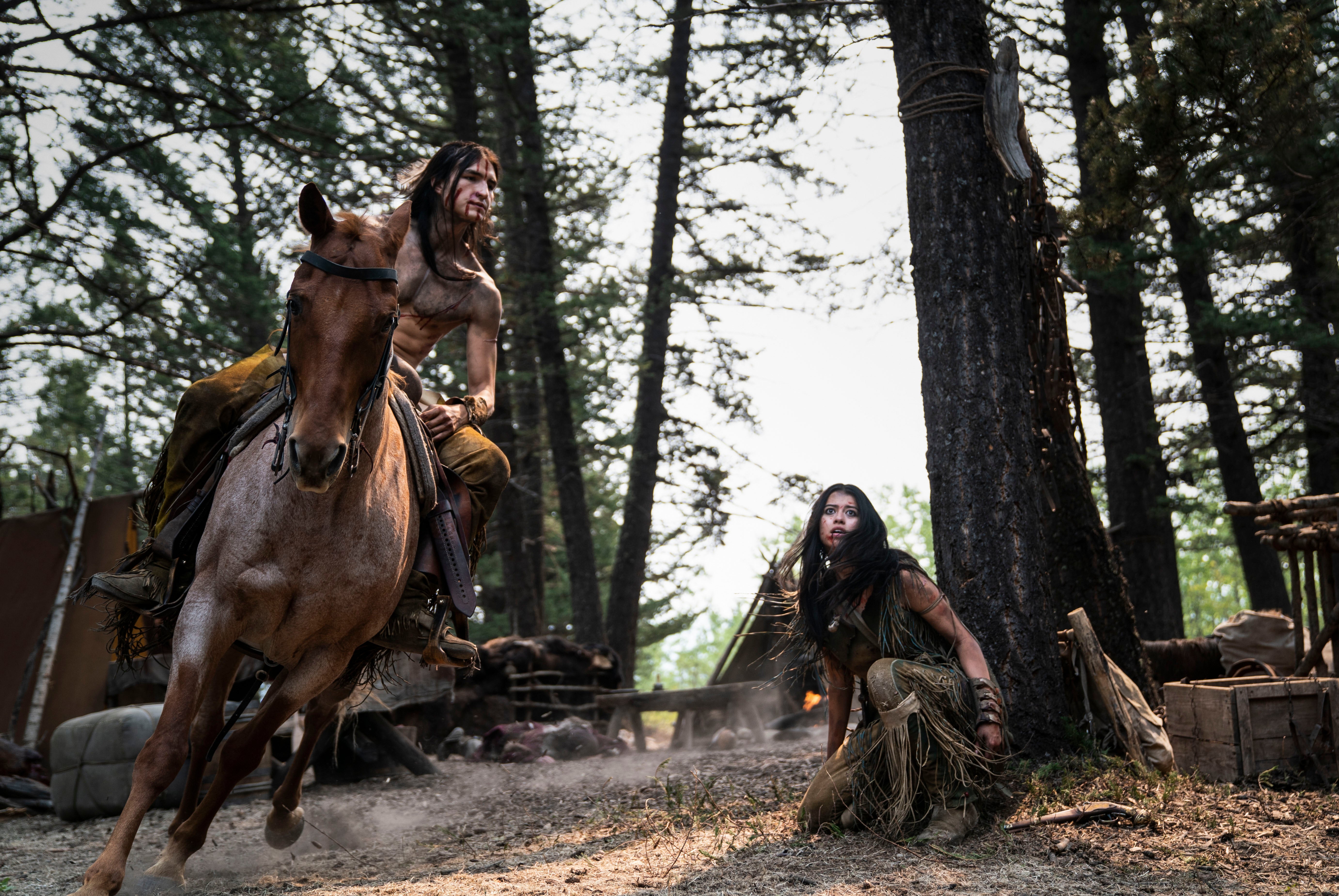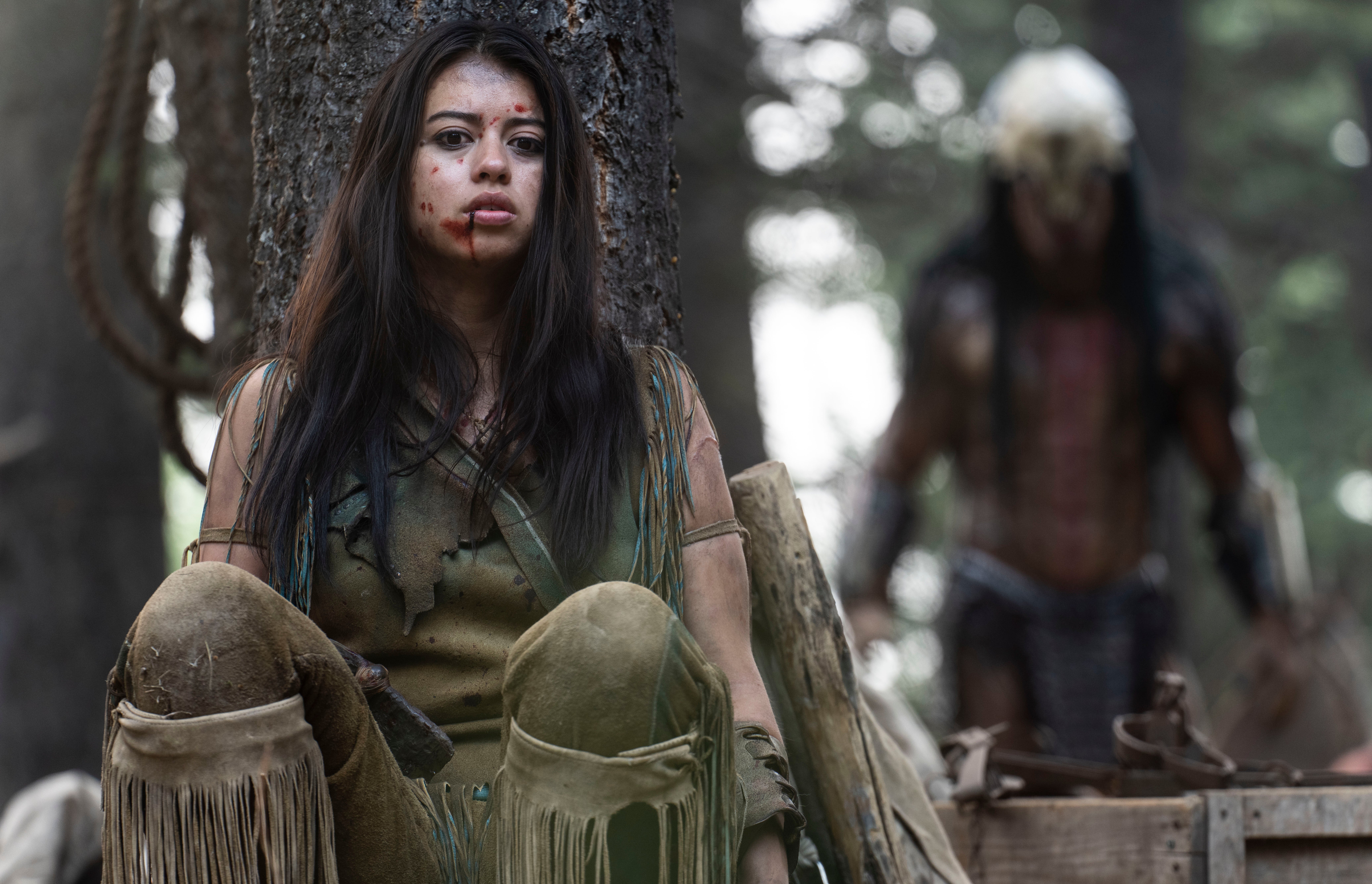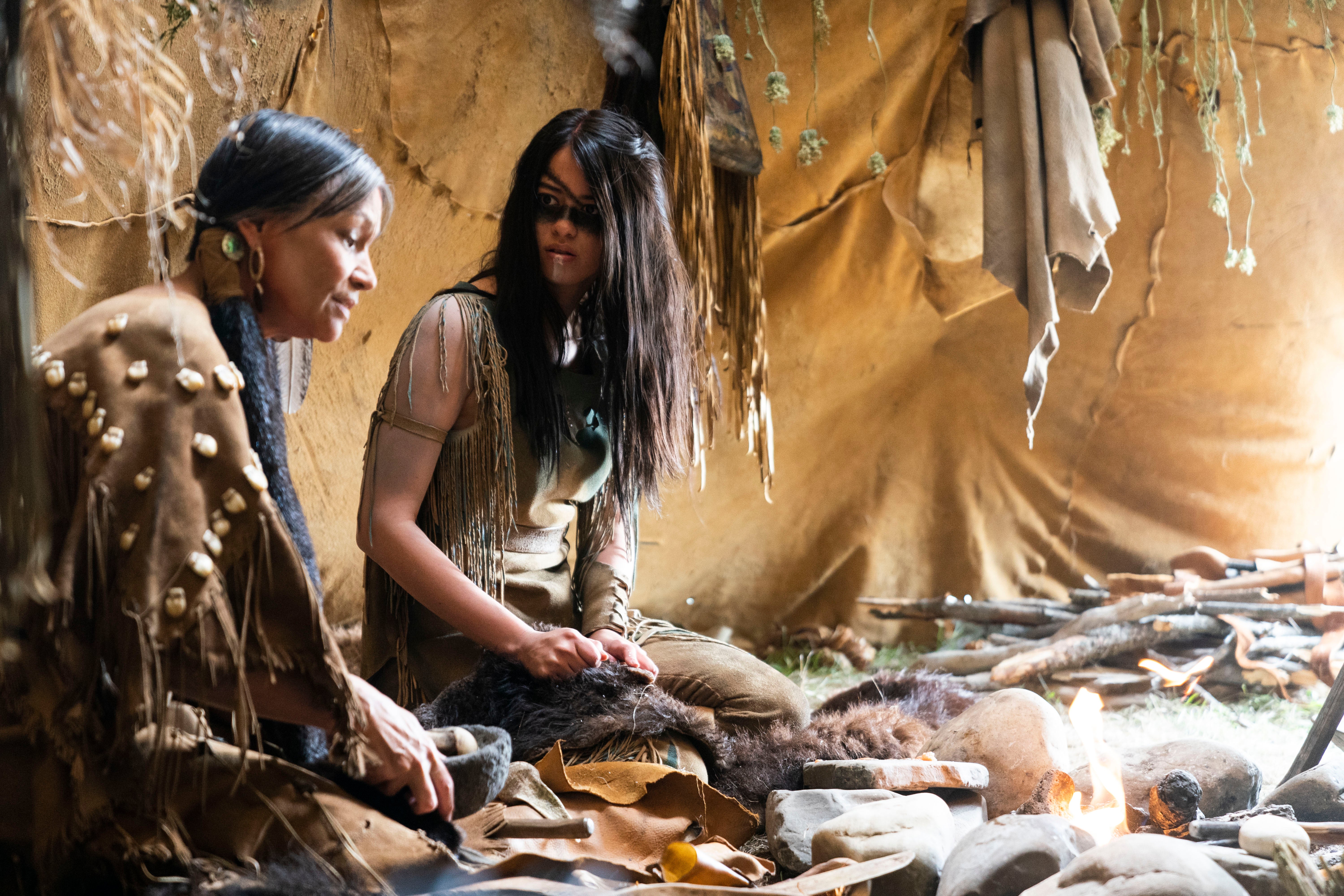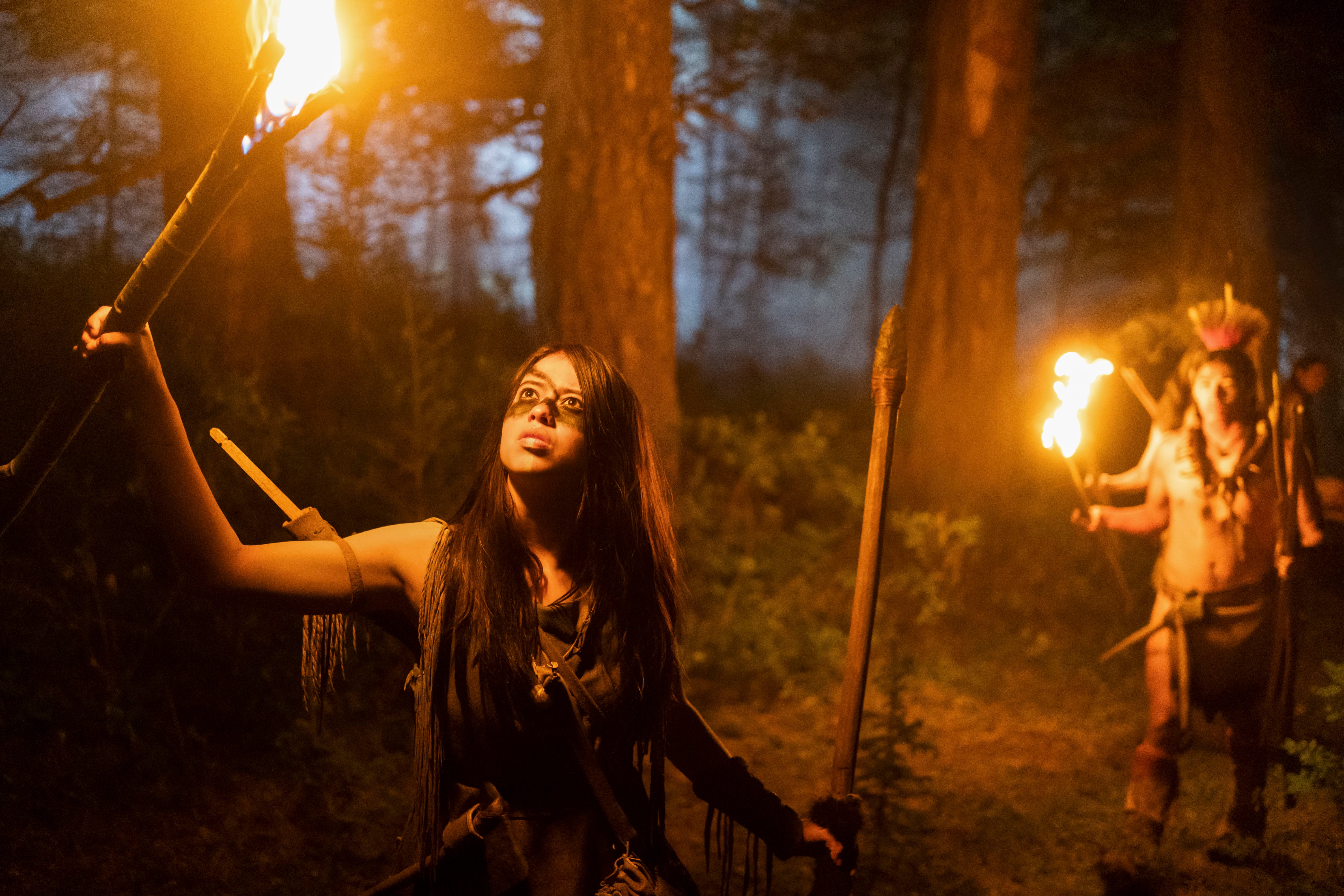The Predator franchise has seen its share of ups and downs. Like any good horror/science fiction property from the ‘80s, however, it manages to keep coming back in various new attempts. Where the past few films have seen the franchise more fully embrace the action side of things, Prey finds its footing by returning to the horror roots of the original. The end result is a film that manages to capture the old-school “creature feature” vibe while providing modern thrills.
By and large, the Predator films have kept up with our current timeline. The original takes place in the ‘80s, the sequel in the ‘90s, and so on, allowing the franchise to grow into the modern era along with audiences. Prey flips the script, however, by taking the story back roughly 300 years to 1719 — giving us the story of (presumably) mankind’s first encounter with the spacefaring trophy hunters. Taking the setting back to the days of yore is definitely something the franchise needed. It infuses the story with a fresh perspective that keeps you engaged, even as it hits familiar beats. We’ve seen a Predator kill unsuspecting people before, but not in this kind of context.
That context is important, because not only does Prey give us a set of protagonists who are distinctly different from any we’ve seen before, it gives us a different Predator as well. It’s still part of a highly advanced race able to travel through space, but the technology he uses still manages to feel “dated.” From donning a bone-skull mask that still features a heads-up display, to changing the iconic tri-laser targeting weapon we all know so well, to arrow-based ammunition. The tech is still clearly ahead of the times compared to humans, but shows how the aliens have also evolved throughout the years. It’s a subtle bit of worldbuilding the film continually excels at.
The story of Prey centres on Naru (Amber Midthunder), a Comanche Native American on the Great Plains who is disillusioned with her current role in the tribe. Her father was known as a great warrior who passed his skills on to her and her older brother Taabe (Dakota Beavers). While Taabe has accrued renown through his prowess, Naru feels constantly in the shadows of her more famous warrior family. Naru knows she can help her tribe in ways beyond gathering and medicine, and is desperate to prove herself capable of doing so. To do this, she’ll need to complete the “kühtaamia,” or the big hunt — a sort of rite of passage to be accepted as a warrior and hunter, and she’s eager to participate in it.
This is Naru’s driving purpose in Prey, and her opportunity comes soon enough when a mountain lion takes one of her tribesmen. A hunting party is rallied to run down the big cat, and hopefully recover their friend alive. Naru joins the party due to her skill in tracking and healing, but Taabe sees it as a chance to give Naru her shot at kühtaamia. In the interest of avoiding spoilers, I won’t detail specifically what happens, but suffice it to say things don’t go according to plan. Regardless, the lion hunt reveals a far greater threat as a different sort of beast stalks the forest. Naru knows something strange is out there that poses a threat to her entire tribe. Since she’s the only one to see the evidence, however, no one is willing to believe her. To that end, Naru sets out on her own to track down the creature, not only to prove herself capable, but to ensure her tribe’s continued safety.

Unlike the last few films in the Predator universe, Prey actively works to bring the scale of that encounter down a few notches. It’s not as concerned with expanding the mythos, or teasing global level threats. Instead, it keeps things personal — a move that puts it more in line with what made the original Predator so fantastic. Like the original film, Prey takes a slow-burn approach to dealing with the alien/sci-fi elements. Both movies tell their own story, something that would have its own outcome and conclusion if you took the alien out of the equation entirely. Either way, the story finds itself intersecting with one mean — violent — alien, at which point the focus shifts to something more akin to a mystery.
By bringing the overall scope of the story to a more intimate level, it makes the threat of the Predator feel all the more pressing. In this way, Prey manages to bring the franchise back to its original creature feature/horror roots, which plays to Dan Trachtenberg’s strengths as a filmmaker. As we saw in his debut film, 10 Cloverfield Lane, Trachtenberg manages to elicit a great sense of tension out of the mundane. Even as Naru goes about normal tasks (like setting up camp and picking up trails), there’s a sense of something being out of place, a constant tension as you’re never quite sure when the Predator will strike.
This only builds as things get progressively worse, with a rising body count and some of the most brutal Predator kills we’ve seen on screen so far. Prey brings that monster element back to the alien; with its cold demeanour in doling out death and reveling in the gore of its kills, the creature feels like something pulled out of a slasher flick. But that’s not to say there isn’t a lot of out-there action alongside the monstrous aspect. There’s more than enough to keep audiences on the edges of their seats — it’s just not massive set piece after set piece, however. Instead the action builds throughout the movie, with things starting off simple enough, and continuing to escalate before reaching an action-packed final act (with a kill count rivaling the entirety of the franchise combined) that barely gives you a chance to breathe.

This tiered approach to the action scenes gives each of the characters their own chance to shine. You get a feel for their skill levels and what they’re capable of all while ensuring each sequence — even the smaller ones — brings that “holy crap!” factor. Seriously, the Predator duking it out, hand-to-hand style, with a bear somehow isn’t the coolest thing that happens in this movie.
Beyond its action, Prey features a story structure pulled straight out of classic creature features, one few modern films have been able to implement well. What makes some of the best films in that genre work — including Predator — is understanding how the interesting part of the story isn’t about the creature itself, but rather how the humans we’ve become attached to deal with it. It’s a tough balance to manage, as a film needs to contend with the audience’s desire to know more, without bogging things down in exposition and losing the individual story being told. It’s something the more recent movies in the Predator franchise have struggled with, as they sought to expand the lore into something much bigger. The Predator (2018) wove in bigger galactic threats with a dash of government conspiracy. Even Predators (a film I contend rules incredibly hard) threw in elements of warring alien factions and a more complicated hierarchy. As a result, the films managed to create worlds vastly more interesting than the stories they set within it.
Prey, however, takes the franchise back to its roots by deftly weaving engaging characters and impressive action into a self-contained story. You get bits of lore sprinkled throughout, hinting at larger connections. There are tantalising threads that feel like they could lead to a bigger universe of stories, but they’re presented in a way that doesn’t distract from the core story being told. The worldbuilding takes a more subtle approach, which, given the time period of the movie, feels necessary. Naru and her tribe aren’t scientists with advanced technology to uncover the “whys” of the creature. Instead, Naru comes to learn things more naturally (sometimes the hard way). Even then, this knowledge is limited to the things she needs to know in order to survive and fight back.

The effect of this approach is a film fun to digest for both long time fans and newcomers alike. For those not familiar with the franchise, the tight perspective on Naru means audiences are learning about the creature at the same time she is. For long-time fans, however, it’s neat to see how this character comes to learn the information we’ve known about. Prey has fun with some of the franchise’s tropes, like how the Predator uses heat signatures to track people. How Naru learns about this ability, and her own way of hiding from it, is very different from what we’ve seen before — and in turn, makes rediscovering the information feel brand new.
As a child who grew up with the Predator franchise, and able to trace my love of creature features in general back to the original, I was already looking forward to Prey’s release. When details came out it would centre on Native Americans with Native American actors as well, I was over the moon. As a Native myself (hailing from the Ponca tribe of Oklahoma), I was excited to see a new story in a franchise I loved featuring Natives at the forefront of the story. Movies with Native American protagonists who aren’t merely companions, or villains, are few and far between, let alone in a major franchise like Predator.
Native Americans in the media haven’t always been handled well, and it’s only in recent years storytellers have worked to undo the decades of stereotypes they’ve been saddled with. Thankfully, Prey goes above and beyond in how it represents Native Americans. Right off the bat, it’s amazing to see the cast filled out with Native American actors. There’s no fudging the tribal rolls here, and it makes all the difference when it comes to seeing the characters interact with one another and within their camp.

Discussions around casting diversity and authenticity have increased over the years, but it’s important to understand it goes beyond mere representation. When you cast actors from the background of the role they’re playing (e.g. people who’ve participated in the culture), there’s a level of naturalness to scenes, a comfortableness to their movements/interactions you wouldn’t otherwise get. There’s a scene in the film where Taabe returns to camp from a triumphant hunt, and the ailing elder of the tribe names him “War Chief.” It’s cause for an impromptu celebration, with music and singing. In the background you can see members of the tribe start dancing. It’s a small thing, far from the focus of the scene playing out (as Naru confronts Taabe), and consists of only a couple people rather than a full Pow Wow. Their dancing, however, was instantly recognisable to me.
I’ve seen plenty of Native dancing portrayed on screen, but it’s always obvious when it’s done by non-Natives. There’s a stiffness to the motions; a sense of the movements being forced rather than flowing naturally with the rhythm. In this small moment for Prey, however, it felt like I was watching my own relatives celebrating and having fun during our regular Pow Wows. The number of moments like this throughout the film are too numerous to count. The ease with which the main characters and those fleshing out the background (making the tribe/camp feel active), embody these characteristics makes big chunks of the film feel almost like watching a slice of life window into the Plains Indians.
The film casually incorporates “Hand Talk” during multiple sequences as well. Plains Indians frequently used a form of sign language (regardless of the ability to hear) until the Federal government cracked down on it in the 1800s as they “civilized” Natives in boarding schools. Today, there are efforts to keep Hand Talking from dying out altogether, so it’s not exactly a commonly known thing. Seeing it appear throughout Prey hammered home the amount of care and attention to detail the filmmakers took with highlighting authentic Native representation.

That’s not to mention how the film uses language to centre the Natives within the story. Later in the film, Naru runs afoul of French traders who treat the Natives like animals. Because the film is from Naru’s perspective, however, it’s the French who are presented as speaking a completely foreign language. The film doesn’t translate what the traders are saying either. Instead, we must infer their meaning in the same way Naru does during her time with them. It’s a subtle thing, but for decades, Native languages in film have been used as a way of “othering” Indigenous people, making them out to be wild and uncivilized. Prey inverts that trope completely. Yes, Naru and her tribe speak English in the film (sadly, the Comanche dub of the film wasn’t available to review at the time of this writing), but it’s done that way for the benefit of the audience. The idea being the characters within the film/world created are speaking their native language.
It’s something we’re not used to seeing portrayed, and honestly, it feels like Prey sets a new standard for Native representation on film. It’s refreshing to see how dedicated the filmmakers were to authenticity, and much of that comes down to producer Jhane Myers. As a Comanche and Blackfeet Native herself, Myers has dedicated her work in film to ensuring accurate representation of Natives (having served as a cultural advisor for 1883, Wind River, and more). Considering how well the cultural aspects were handled and used as a genuine driving factor for the plot, it shows the importance of accurate representation behind the camera as well as in front of it.
By taking the Predator franchise back to basics and setting it in the past, Prey manages to infuse new life to the series overall. It brings impressive action that holds up to multiple viewings; engaging characters who are well represented; and more than enough blood and gore to appease horror fans. All of this is wrapped up in a tight, self-contained, story that expands the Predator mythos in a way that appeals to both long-time fans and newcomers. Combined with Dan Tractenberg’s eye for action and tense filmmaking style, Prey is easily the best Predator movie since the original.
Prey begins streaming on Hulu this Friday, August 5.
Want more Gizmodo news? Check out when to expect the latest Marvel and Star Wars releases, what’s next for the DC Universe on film and TV, and everything you need to know about House of the Dragon and Lord of the Rings: The Rings of Power.
